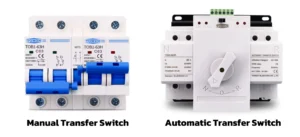When the power cuts out, a generator feels like a safety net. But here’s the catch: if your system doesn’t include an Automatic Transfer Switch (ATS), that safety net may not be as reliable—or as safe—as you think. An ATS is the behind-the-scenes operator that ensures your backup power isn’t just working but working correctly.
What is an Automatic Transfer Switch (ATS)?
An automatic transfer switch is an electrical control device that connects your building to both utility power and a backup generator, automatically selecting the safer source.
Think of it like an air traffic controller: it doesn’t fly planes (generating electricity), but it guides them to the correct runway (your power system) to avoid collisions. When the grid goes out, the ATS clears the runway for the generator. When the grid returns, it guides you back home smoothly.
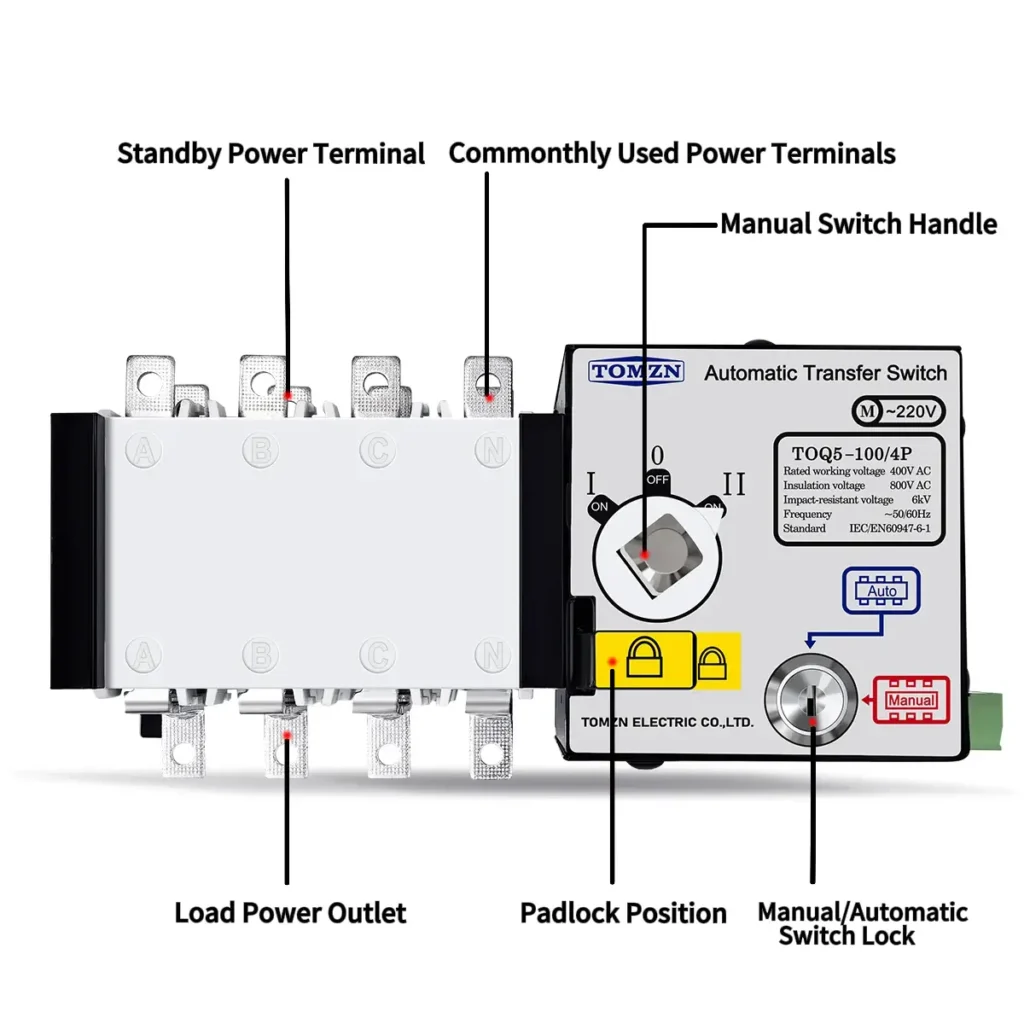
How It Works
An ATS follows three simple but critical steps:
First, it continuously monitors the voltage and frequency of the utility line.
When the grid goes out, it commands the generator to start and transfer the load.
Once the power stabilizes, it returns the load to the utility and then shuts down the generator before resuming operation.
If a family uses a CPAP machine for sleep apnea treatment, even a few minutes of delay in restoring power could interrupt their breathing therapy. With an ATS, switching to generator power takes only seconds, maintaining uninterrupted operation.
Key Functions and Benefits of ATS
An ATS is more than a convenience switch. It is a critical safeguard for safety, compliance, and efficiency.
- Automatic Power Switching
No fumbling with cords or breakers during a blackout. The ATS does the handoff automatically, saving valuable time.
- Source Isolation and Grid Protection
In the absence of an automatic transfer switch, generator-produced power can flow in reverse into public electrical grids. Backfeeding is more than a technical error—it can be deadly for utility workers repairing downed lines. The ATS prevents this by isolating the generator from the grid before it transfers power.
Many jurisdictions require ATS installation for generators over a certain size. Skipping it could leave you non-compliant with codes and void your insurance coverage.
- Load Management and Prioritization
Some ATS models can do more than switch power—they can prioritize it. This means essential circuits get power first.
Equipment like refrigerators, sump pumps, and medical devices would be considered high priority; hot tubs, pool pumps, or decorative lighting would be lower priority.
This “triage” approach maximizes generator efficiency and ensures limited fuel is used where it matters most.
- Faster Power Restoration
Seconds count in a blackout. An ATS restores power almost instantly, which can keep your security system online, prevent IT servers from crashing, or maintain refrigeration in small businesses. Even short delays can mean lost data or spoiled inventory.
- Compliance with Safety Standards
Most modern ATS units are tested to meet UL 1008 standards in the U.S. and international equivalents elsewhere. This isn’t just paperwork—compliance protects your equipment warranty and strengthens your legal standing if something goes wrong.
Types of Tomzn ATS
Tomzn offers a wide range of affordable, compact transfer switches designed for homes and small businesses. Here are the main categories and their strengths:
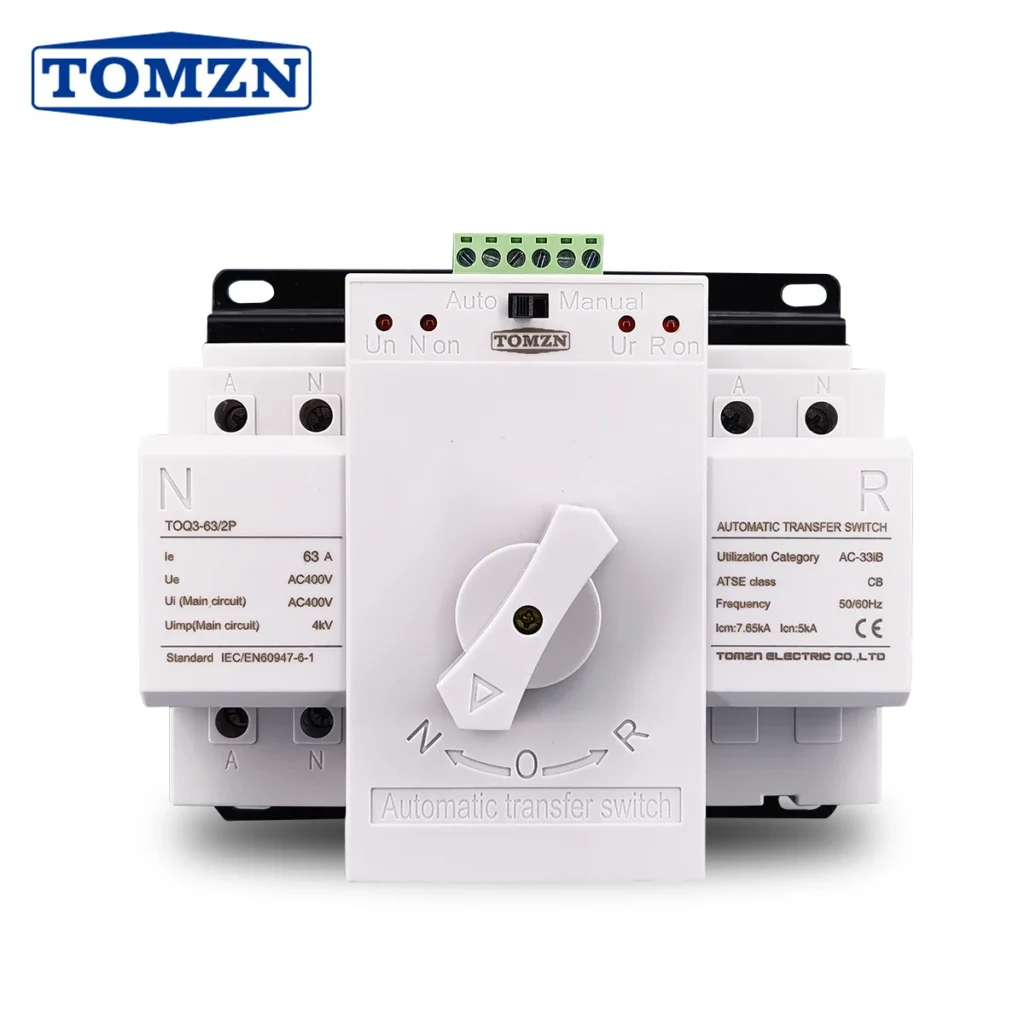
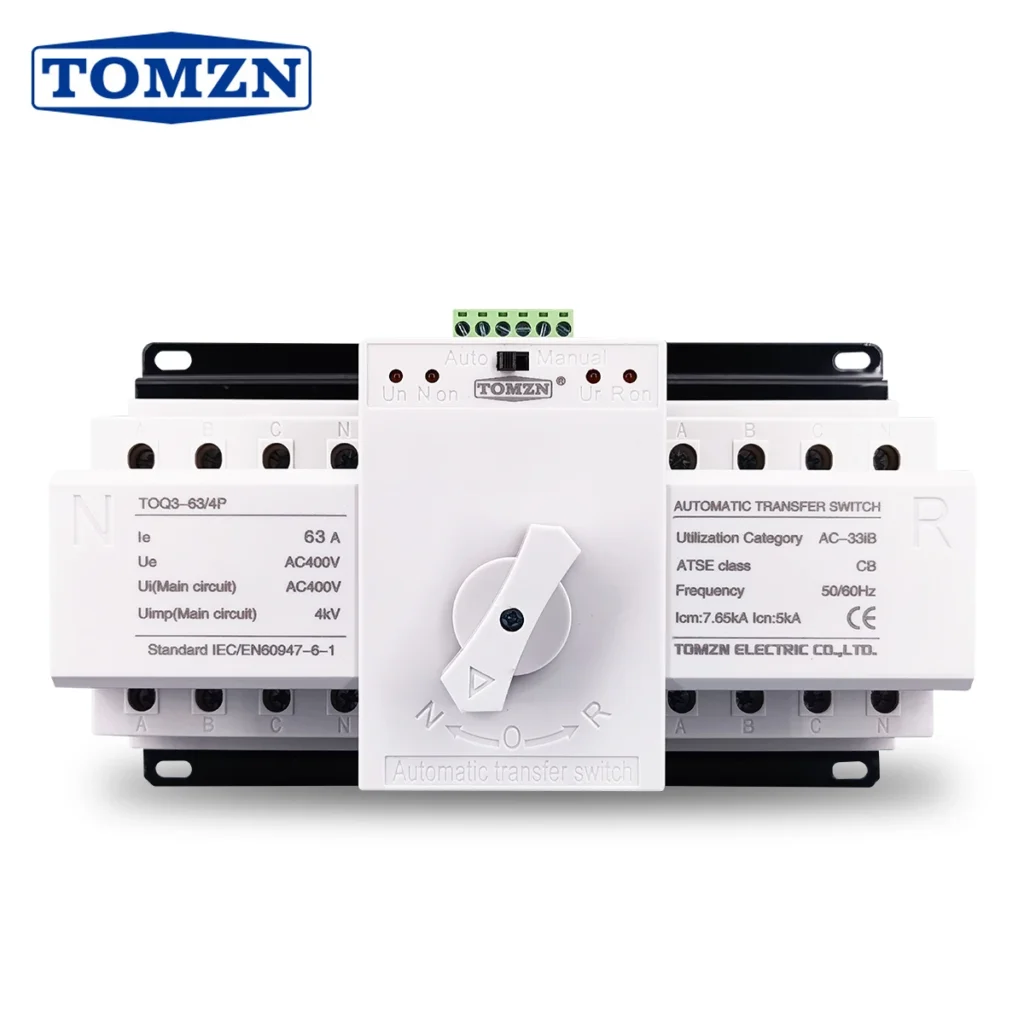
- Miniature ATS Units
- Rated for lower currents (2P/4P 63A).
- Space-saving design, ideal for residential breaker panels.
- Best for households using portable generators or inverter systems.
A small workshop running a 5kW generator could use a miniature ATS to keep lights, tools, and ventilation running.
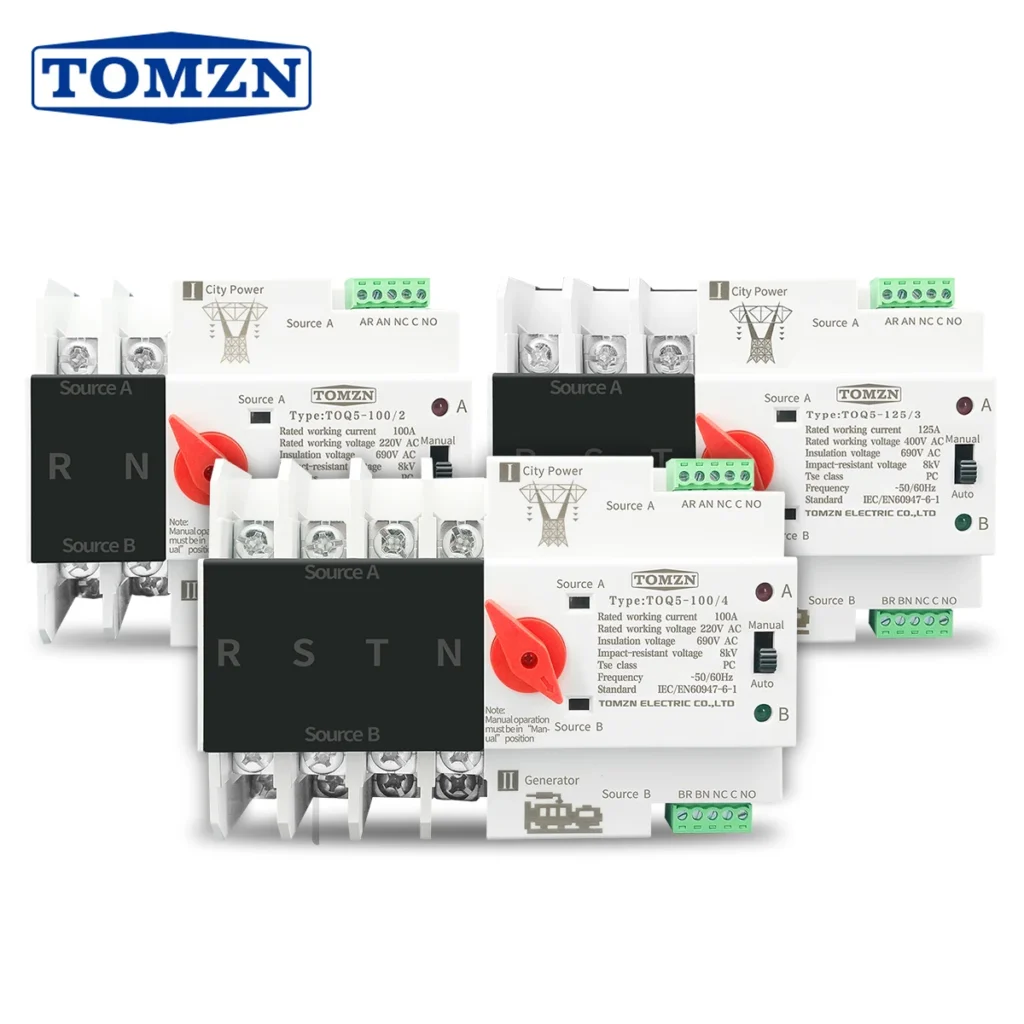
- Dual Power Automatic Transfer Switches
- Handle higher loads (up to 100A+).
- Suited for shops, small offices, or commercial kitchens.
- Can operate in both automatic and manual modes, offering flexibility when testing or troubleshooting.
- Handle higher loads (up to 100A+).
A neighborhood café could use a dual power ATS to ensure refrigerators, espresso machines, and POS systems stay online during a citywide outage.
- Intelligent ATS with Display
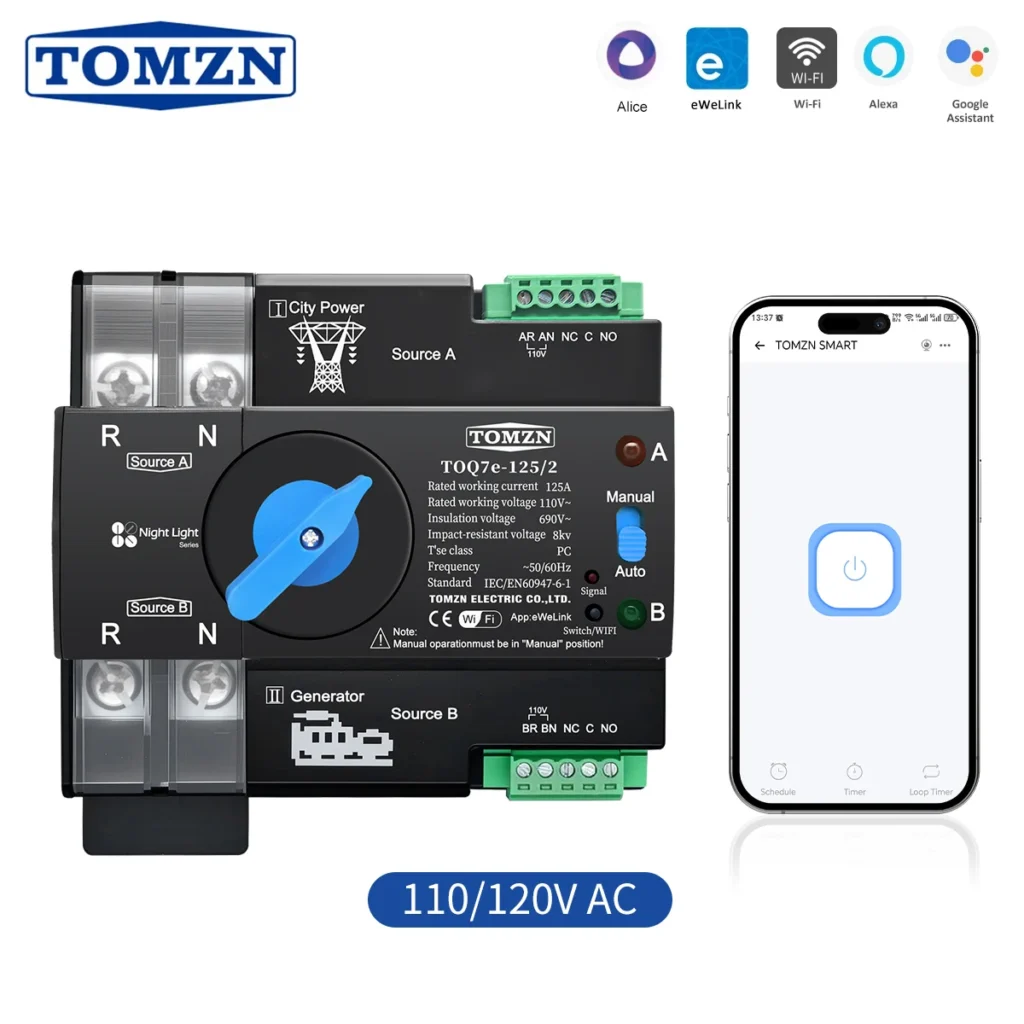
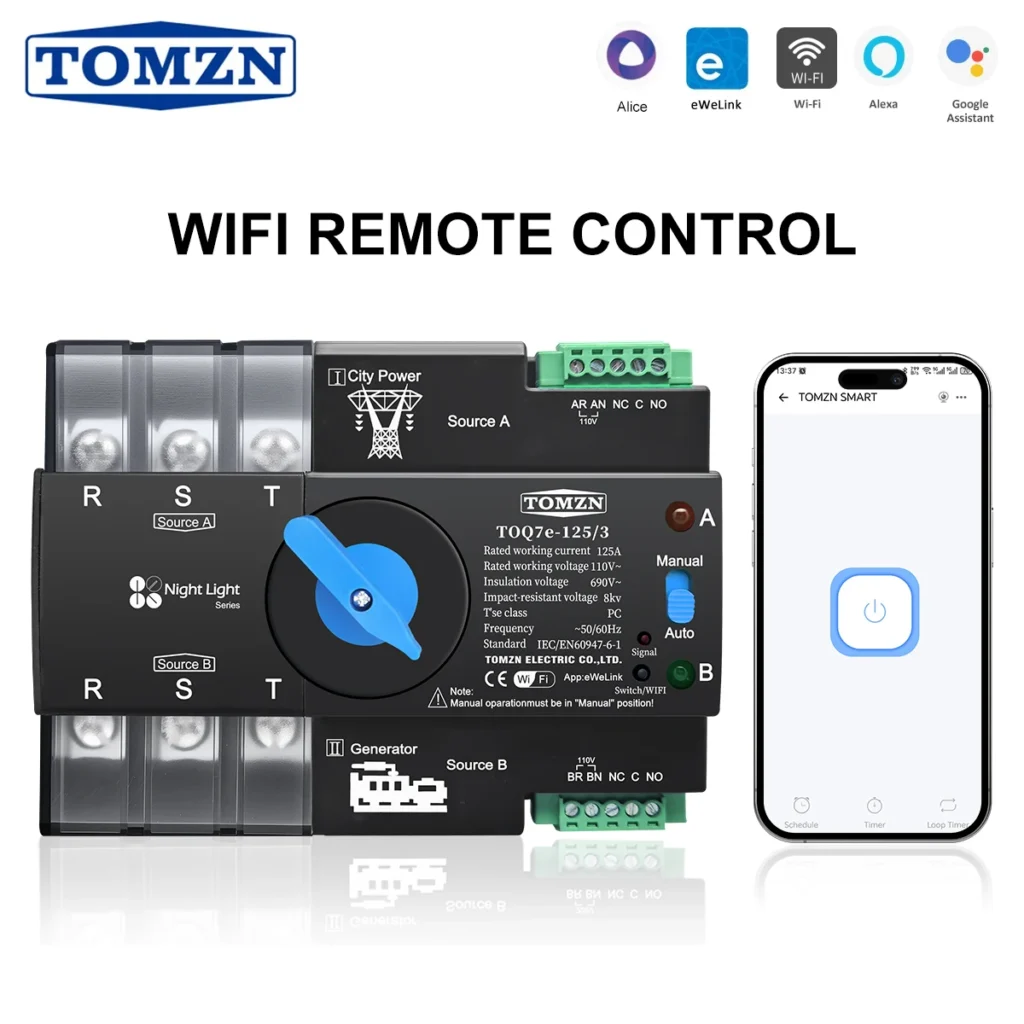
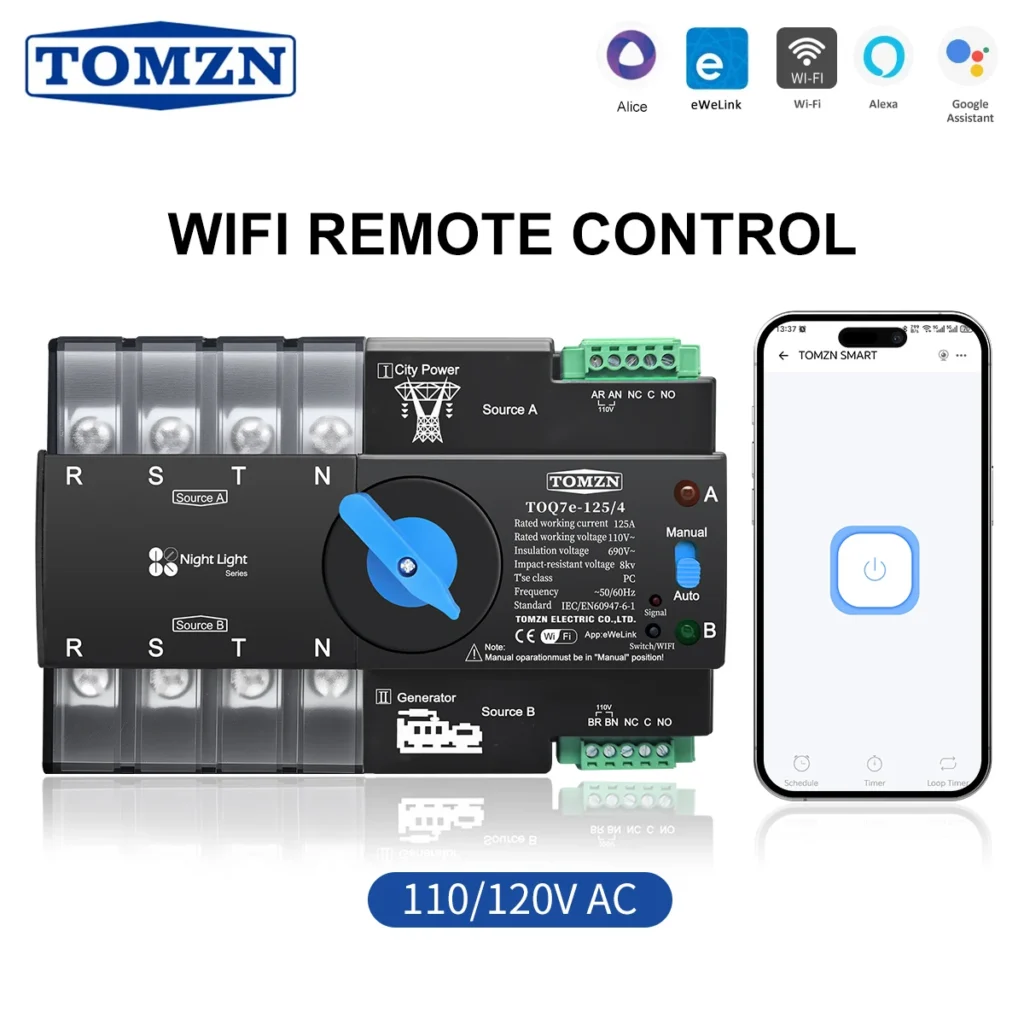
- Provide digital readouts of voltage, current, and frequency.
- Programmable sensitivity settings allow users to fine-tune when the switch triggers.
- Ideal for systems combining multiple sources, such as solar + grid + generator.
Homeowner with rooftop solar and a backup generator could use an intelligent ATS to balance renewable energy with backup needs during extended outages.
To match your current needs, we recommend the following three steps:
- Step 1: Match the ATS to your generator’s rated power. For a 6kW generator at 220V (approximately 27A), a 63A ATS is sufficient.
- Step 2: Install it between the utility input and the generator input, and connect the output to the load circuit.
- Step 3: Test: Disconnect the utility power and confirm that the ATS switches to generator mode within a few seconds.
Ready to protect your investments? Contact us today to reguest a quote or to learn more about our full range of Automatic Switch Transfer solutions. Our team is standing by to help you find the perfect product for your project.


